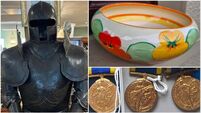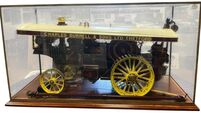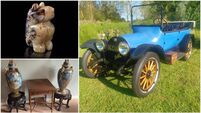Beyond the pines: Cork furniture designer and restorer looks back
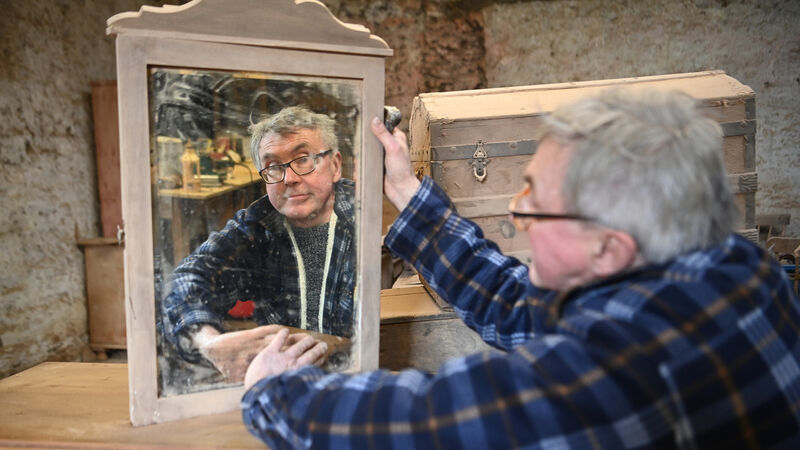
Bruce Perkin in his workshop. “I suppose we are known for vernacular Irish pine — but we’ve never been strictly that." Picture: Dan Linehan
Dealer, restorer and furniture designer Bruce Perkin is a highly familiar character in the Munster antique and interiors circuit. So, it was a jolt to hear that like so many of these rare artisans, he was retiring.
In the gilded light of his remarkable stone workshops in Tivoli, Cork, sits a patient population of period shutters, dressers, brass beds and disassembled old dears.
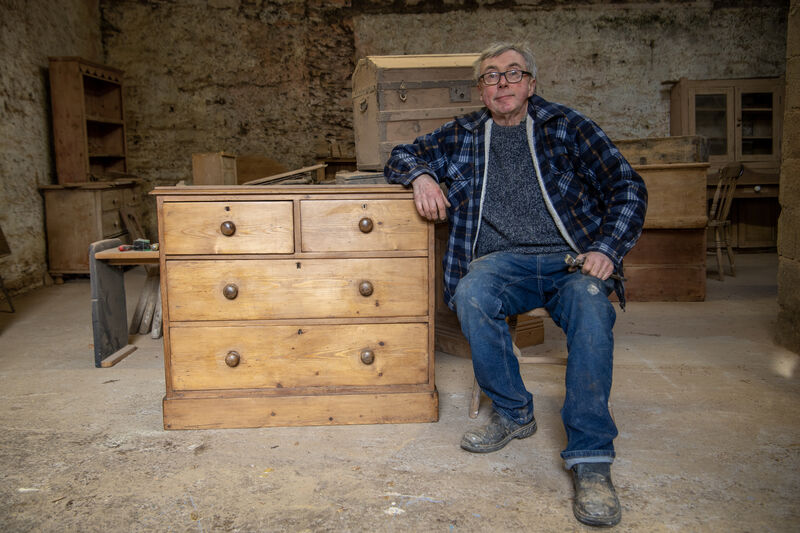
A newly made, black American walnut bookcase awaits collection by a local doctor. Bruce admits to loving walnut in a conspiratorial, low voice as if to not wind up the assorted timbers stacked neatly against his walls. I creak my chilled behind into a matronly súgán chair to discuss Bruce’s rewarding life in a trade marginalised by the pressure of rates, materials and overheads.
“We’re officially closing on February 21,” Bruce confirms cheerfully, a sanding machine blazing away beyond his office.
“Still, everyone in the trade or the public is welcome down for a look around, and I’ll still be taking on special commissions. We’ve been here for over 25 years. I initially rented two of these three buildings from Peter Crowley, before we bought in.
“I suppose we are known for vernacular Irish pine — but we’ve never been strictly that. We began in antique Irish pine, as it was plentiful and some of the best furniture of its type in the world. The quality of pieces by the journeymen Irish carpenter of the 19th century here was really something.”
How did he come to dock in Tivoli ?
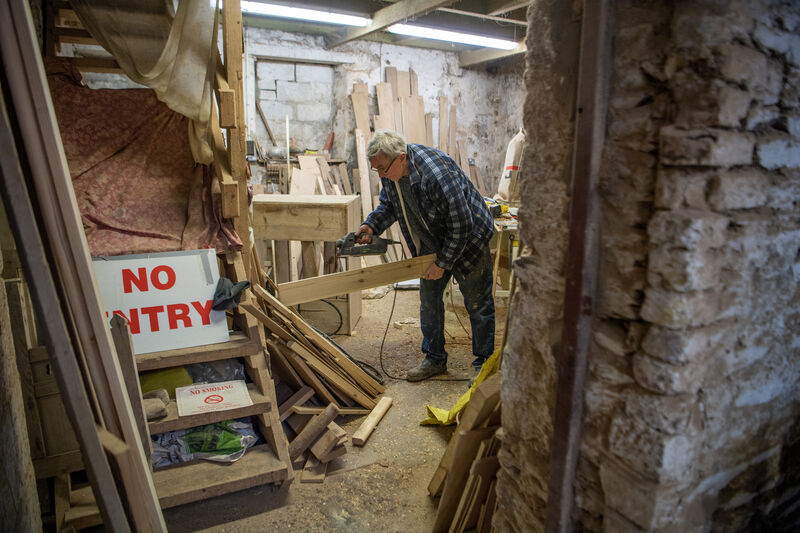
“I was born in Belfast, but had moved back to England when I was very young," says Bruce.
"I arrived in Ireland in 1975 with a friend on our little Honda motorbikes, with 50 Punts in our pockets. We rented a flat in Youghal, doing whatever work we could get, married two sisters and moved up to Cork. I did have some college education in architecture, and a deep love of design, but in every other way, I’m self-taught.
Bruce started out at Pinnacle on MacCurtain Street — known for country furnishings, working for Wes Crawford (proprietor of the legendary chipper in Douglas, KC’s).
"I found I really enjoyed working with wood, and thought to myself: ‘I would really like to keep doing this ’," says Bruce.
"I was lucky enough to go on to develop a business here with my wife Judy from 1994.”
Bruce indicates the fielded panel of a stately corner cupboard with clear appreciation. Simple, functional, perfect in proportion, it’s everything that’s “right” about Irish vernacular furniture.
“That’s a real beauty,” he says
His eye and passion for this dirty and physically demanding work is undimmed.
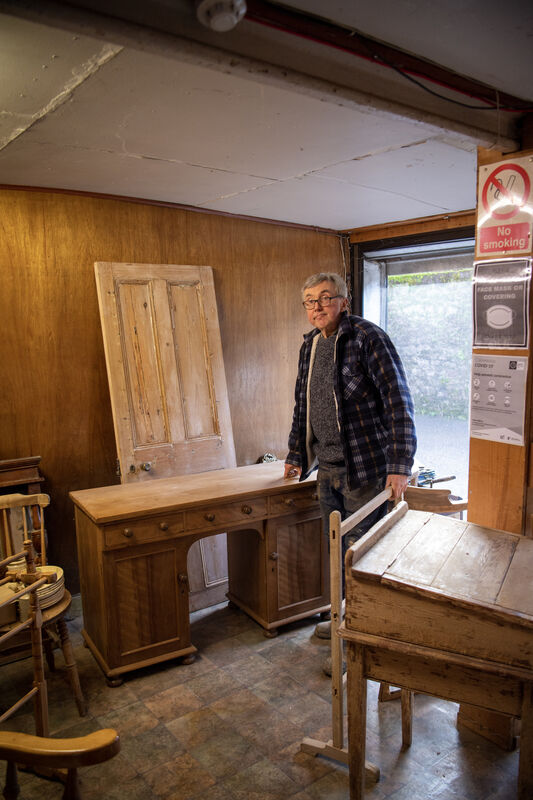
“It would have taken one man around a month to make. In the 19th century, a travelling cabinet-maker would come to your home and design and make furniture for that house, often right in the house. In any area, there might be a small local workshop at the back of a shop or farm devoted to furniture making. Particular journeymen would have a recognisable style related to their part of the country," adds Bruce.
“Sometimes, in the case of a larger farm with its own woodland, a dresser, bed, settle or chairs would be made from Irish native trees that fell on the land — fruitwoods, elm, larch.
Read More
"There was no Ikea in the 1800s. Retail was for the upper tiers of the merchant class who wanted mahogany and walnut in Georgian style," he adds.
“These old things are finite of course, but we were able to source at auction, from inherited property, taking on house clearances, and we have dealt very regularly with the Traveller community. Some pieces can be slow to sell. Wardrobes for instance because of their size and depth. You always had a ready market for a good Irish dresser or a farmhouse table, but some things could sit.
Fashions come and go, and we have had to adapt, Bruce adds. “Pine, good antique pieces, are still sought after in Ireland and Britain, as they can be staged easily with contemporary furniture. I like this look, using well-chosen furnishings," says Bruce.
"They give a sense of history to a house or apartment, and it states — this home is in Ireland, not London or New York.
Then, about 20 to 15 years ago, Bruce "could sense that the market in brown furniture was cooling", he says. "So we bought in some machinery and started doing more restoration, designing, and creating one-off pieces to commission for interior designers and individuals — tables in oak or ash, kitchens, shelves, storage pieces," he says.

"Some of that was recovered from old wood. I see this work as the ultimate in sustainability — recycling shutters to cupboards, and floorboards to tables. We made a lot of furniture for Cork shops and restaurateurs including Conrad Howard in Market Lane, Elbow Lane Brew & Smokehouse, Ballymaloe, and of course, Goldie," says Bruce.
So, what about the finish? “British and French dealers like pieces in-the-paint (original layers of colour) — not so much in Ireland," he says.
Read More
“Pine recovered from a very damp house may have seriously flaked. Customers often want to reveal aged timber to marry up with say sanded floorboards. To finish sanded, restored native Irish wood pieces, I like Bri-wax, water-based paints and varnish if something is being used in a bathroom.”
Is there a danger of devaluing furniture in this age of frenetic up-cycling? “The thing is, don’t look at Irish country furniture from a value point of view," says Bruce.
"To invest, buy Georgian mahogany or walnut. Dark woods. Buy period, Irish country furniture because you love it, and it’s Irish, and because it’s completely handmade. It doesn’t cost more than most, mass-produced furnishings. The good thing about a properly stripped or dipped, restored piece of pine or native wood is that you can paint it, if and when you choose. My wife Judy did some lovely projects in paint over the years."
What about the live stuff in pine or softwoods? “Worm lives in your garden and comes in through the windows (they are flies to start with)," says Bruce.
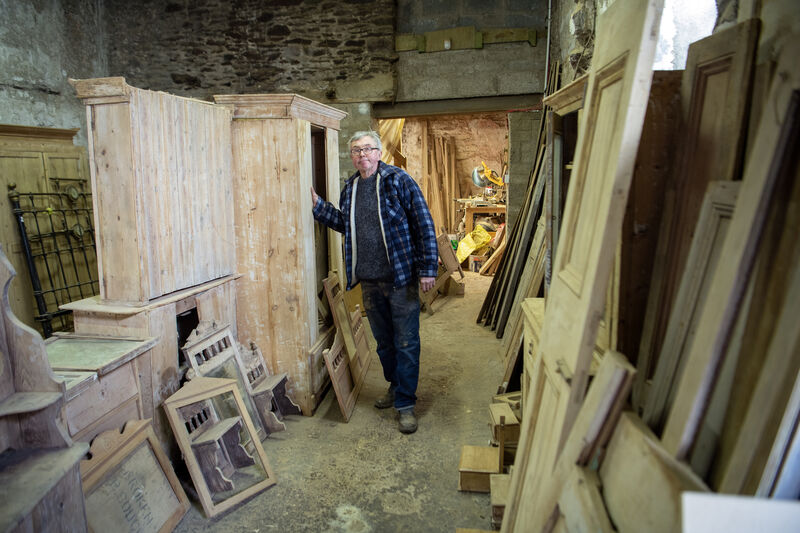
"Today there are water-based, environmentally-friendly products that can be used in multiple applications on the bottom or back of an infested piece. Leave it in the garage over two weeks. I have replaced a lot of wormy, old, wide backing boards on dressers for instance, and these pieces can be saved for another 100 years of service.”
What would Bruce consider his star find? He doesn’t hesitate. “A Traveller brought in three bags. Inside was what was left of a magnificent larch dresser from the 1780s from East Cork. It had seriously rotted but had all the detail in the drawer fronts and doors — carved columns, cartwheels, running wheels, and a wonderful frieze for the top.
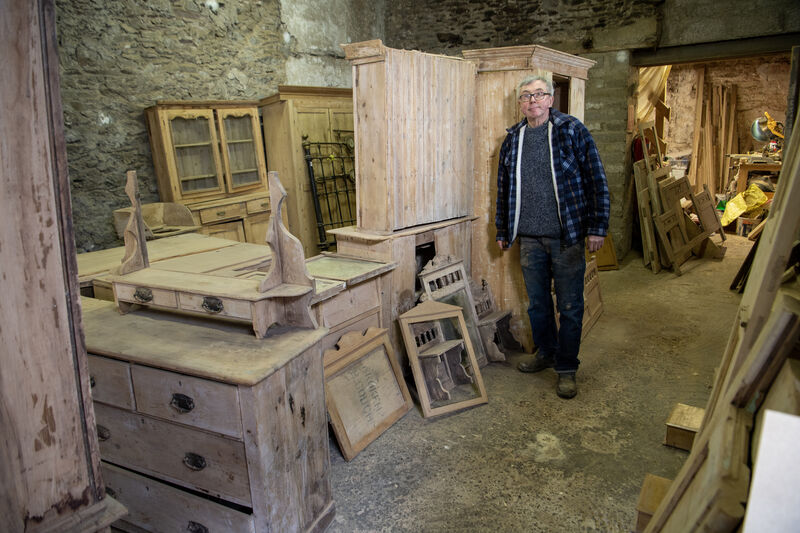
“Over a year, I collected up wood of the same period and rebuilt it. I sold the dresser through Pinnacle and sadly, it went overseas to Holland to a book dealer in Amsterdam. There was also a refectory table, 12 feet long with chunks out of it, that I restored. For years after it sold, I would go out to Carrigaline and polish it for the family who gathered around it every day. A fantastic thing.”
There is something Bruce wants to impart as he (haltingly) leaves the business. “There are some brilliant individuals in this next generation, and we should support these young designers — their vision and skills in various woods. Buyers should get to know the work of fine furniture makers like Reece Wall ( info@willowdesign.ie) and Trevor Mee (@mountain_woodwork).
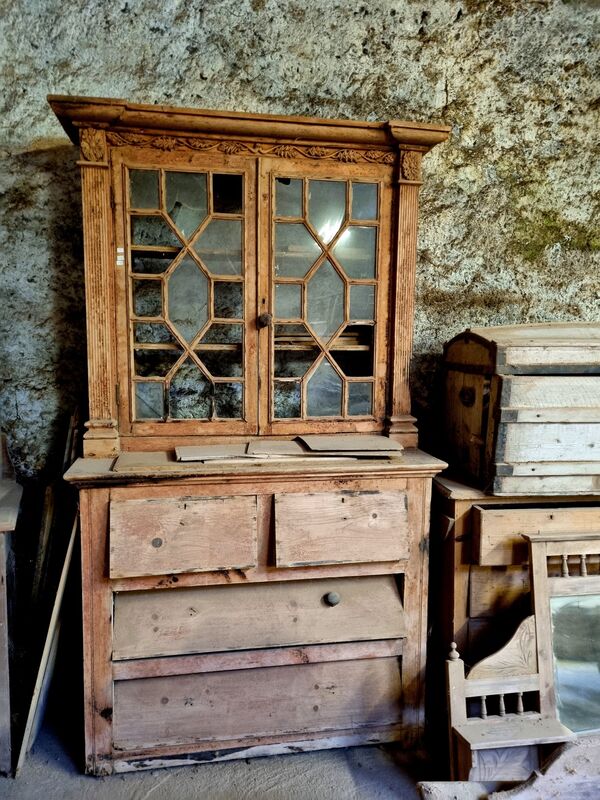
Bruce shows me a sagging pine dresser of circa 1830, with fine astragal doors, the rosettes and oak leaves on the frieze made by 19th-century hands imitating the styles of mahogany pieces kept to the great houses. He suggests pricing at around € 600 to € 1,300 for a native wood Irish period dresser depending on its quality, rarity and size.
He lays his palm lovingly on the dresser base, leaving a pale print in the fine gold dust raised by his colleague roaring away at work. “I’m keeping this one as a project. Just in case I get a bit twitchy in retirement. Mind you — I really should confer with Judy!”
- Bruce Perkin's business at Woodside, Tivoli, will remain open (officially) until February 21. Bruce can be reached for enquiries and commissions at bruceperkin@me.com or call 087-7731562



